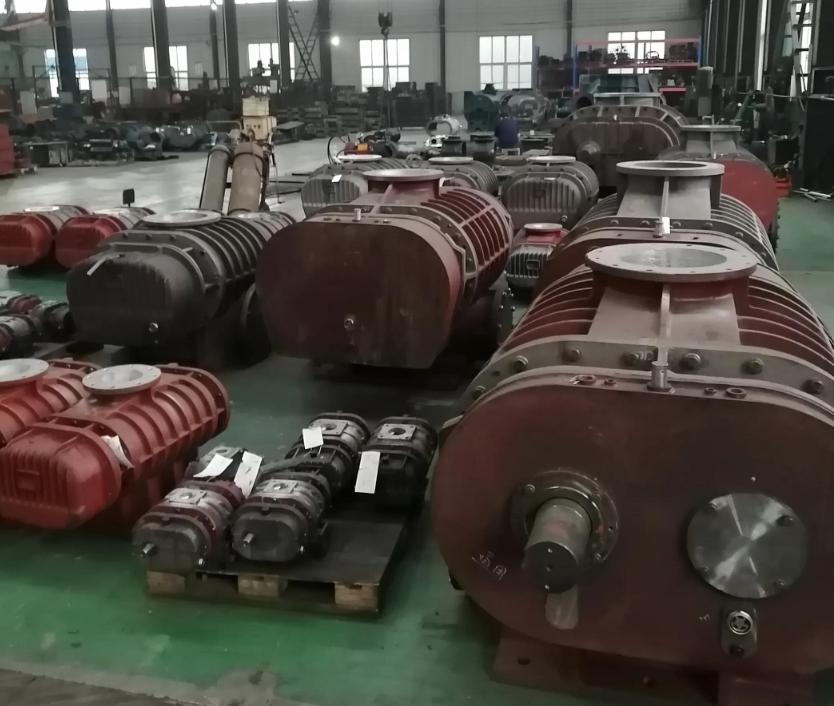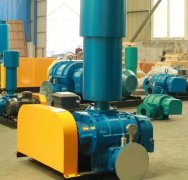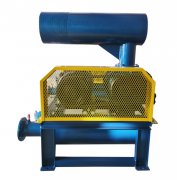Detailed explanation and application analysis of Roots blower structure
Roots blower is a type of positive displacement blower, which mainly consists of the following key components:
1、 Main components
1. Rotor:
The core components of a Roots blower are usually two blade rotors arranged in an 8-shaped or three blade spiral pattern.
Maintain a small gap between the rotors and avoid direct contact, ensuring the formation of a gas delivery channel during relative rotation within the cylinder.
Three bladed rotors have advantages over two bladed rotors, such as smaller exhaust pulses, lower noise, and stable operation.
2. Chassis:
The cylindrical structure provides stable support for the rotor and offers protection.
There are intake and exhaust ports at both ends to ensure smooth gas flow in and out.
Maintain a constant gap between rotors to prevent gas leakage.
3. Synchronous gear:
Located at the end of the rotor shaft, it drives two rotors to rotate synchronously in reverse through a transmission device.
Ensure accurate relative position between rotors and ensure stable gas delivery.
4. Bearings:
High quality bearings support the rotor shaft, ensuring stability during high-speed operation.
Endure axial and radial loads generated by gas pressure.
5. Sealing components:
Including shaft seals and shell seals, ensure the sealing effect of the gap between the rotor and the casing.
Prevent gas leakage and lubricating oil from entering the air chamber.
6. Muffler and soundproof cover:
Reduce exhaust noise and overall noise emissions.
2、 Other auxiliary components
In addition to the main components mentioned above, Roots blowers may also include wall panels (used to connect the casing and impeller, support impeller rotation and end face sealing), inlet and outlet silencers (used to reduce noise), motors, motor rods, pulleys, belt covers, tees, pressure reducing valves, pressure gauges, and other accessories. These components work together to ensure the normal operation and performance of the Roots blower.
3、 Structural characteristics
1. Simple structure: The Roots blower has a compact overall structure and is easy to manufacture.
2. Strong adaptability: By adjusting the speed or replacing rotors of different sizes, it can flexibly adapt to different air volume and pressure requirements.
3. Stable operation: It starts quickly, runs stably and reliably, and has relatively low maintenance requirements.
4. Rate: The high mechanical efficiency and low internal losses in the design keep the overall operating efficiency at a high level.
4、 Working principle
The working principle of Roots blower is based on volumetric compression, which can be divided into three steps: intake, sealing and compression, and exhaust. As the rotor rotates, a pair of rotor blades inside the casing gradually separate to form an intake chamber, and external air enters the chamber through the intake port under atmospheric pressure. Subsequently, the rotor continues to rotate, gradually narrowing the intake chamber until it is closed, achieving gas compression. As the rotor rotates further, the compressed gas is pushed towards the exhaust side and discharged from the exhaust port. This series of processes is continuously repeated during the continuous rotation of the rotor.
In summary, Roots blowers have been widely used in the industrial field due to their unique structure and design advantages.



